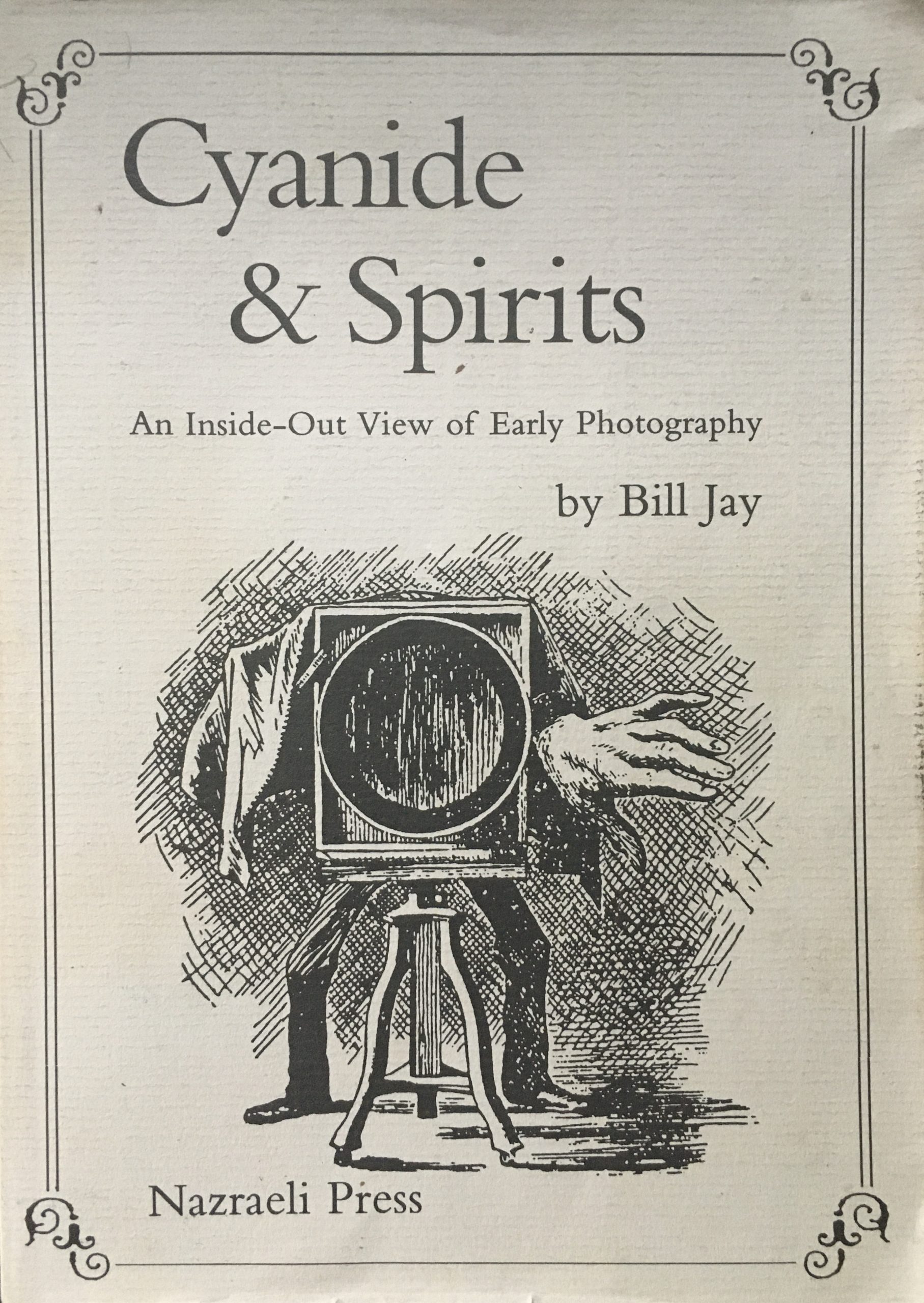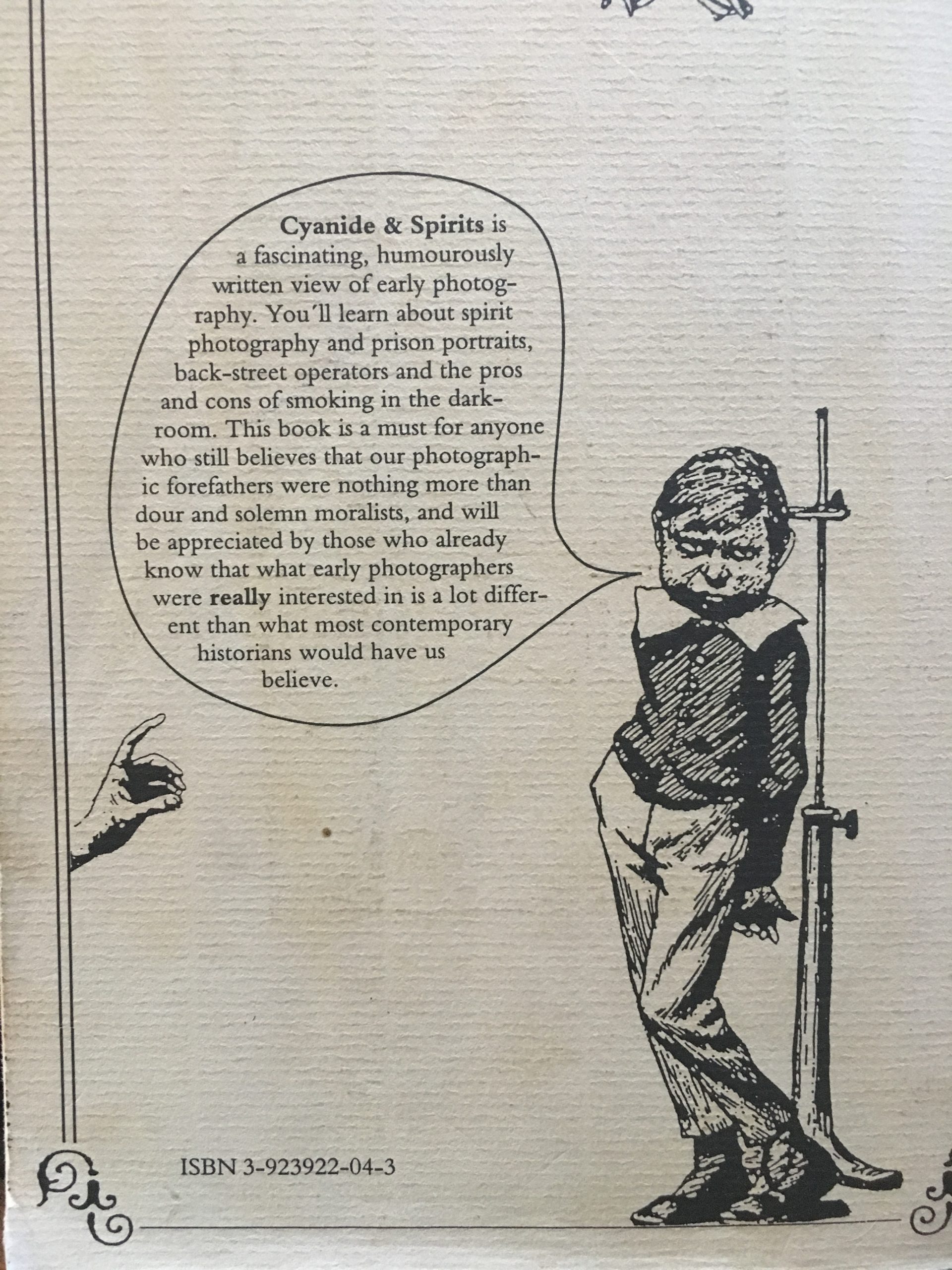
This book. Where do I start with this book?
I think it’s helpful to think of this book as evidence that imagination in research methodology is much needed in art history.
Cyanide and Spirits is a compilation of essays by Bill Jay, all drawn from a variety of 19th century photography journals. While these are common primary sources for photography scholars, Jay’s “inside out” approach reveals how often the same sources are repeated, the same research questions myopically studied, and how much writing about photography and by photographers was happening in its early years.
In the introduction, Jay writes
One of the reasons why the reality of 19th century photography was so markedly and marvellously different from the sense of history portrayed in most modern books on the subject, is that contemporary scholars share a common viewpoint. They look back at the past in order to discover people, processes, images and events which act as direct precedents for contemporary attitudes. In other words the past is used to justify the present. Inevitably, the rigid and restrictive selection process eliminates the mistakes, human foibles, false avenues of enquiry and abortive enthusiams of the early practitioners while creating a lineage from then to now. This is what I would call the outside-in view of history.
The 19th century journals, on the other hand, provide a fascinating glimpse of the issues which concerned the average photographers at the time, who, of course, could not predict their value to the future. Understanding the past in its own context, for its own sake, without reference to now, is what I would call the inside-our view of history
In short, Jay argues that what you look for is what you’ll find. His approach to simply look and tell all of the unexpected stories makes this book very unusual among history of photography essays.
Only three of the topics were ones I was already familiar with: spirit photography, mechanisms for holding portrait subjects still during long exposure portraits, and early voyages to Egypt.
The essays that surprised me most had to do with the dangers of photography in its early days, as well as some of the cons that unscrupulous early photographers ran.
If you know anything about early photographic practices, specifically the daguerreotype (but not that process exclusively), you know that noxious chemistry was necessary to produce results. Daguerreotypes relied on mercury fumes and I did know about the dangers of mercury poisoning to daguerreotype operators. I did not know the frequency of fatal explosions from unstable or inappropriate combinations of darkroom chemistry. Or how often photographers, their assistants, or family members DRANK FROM AN UNLABELED GLASS of clear liquid forgetting which held their gin and which contained the poisonous potassium iodide.
Another chapter that I enjoyed provided a stark contrast between the famous portraitists (Mathew Brady, Disderi, or Sarony, for example) who are often the subjects of scholarship, and the dime-a-dozen portraitists that were flooding the streets of every big city. Art history generally prefers the study of big names like these, or even the “discovery” of photographers who are important in hindsight but who had been lost in the archives. This overlooks the way that the vast majority of people engaged with photographers and had their portraits made (which for many 19th century people happened once in their lives). These back-alley photographers (Jay says “on the wrong end of the social scale”) had a number of “incentives” to ensure that business was never slow including offering the sitters the chance to be mesmerized by the camera after their portrait was made, a special “chemicalized” piece of paper (definitely trash) that would keep the photo from fading, all for an extra fee. Because of the chemicals photographers had on hand, they could also remove warts and dye facial hair black.
The most fascinating con, and that which also helps contextualize the miracle of photography for most of the working- or lower-class patrons has to do with a shop’s window specimens. Many photographers would take these of any willing sitter to advertise to potential new customers what they could expect from the studio. If a photographer ended up with a botched portrait for their customer, they would often take one from the window samples and give it to the customer. The photographer running this grift said “The fact is, people don’t know their own faces. Half of ’em have never looked in a glass half a dozen times in their life, and directly they see a pair of eyes and a nose, they fancy they are their own.” (134)
The essays all point to the necessity of continued primary source research. Jay’s essays only cover English language photography journals and I would love to know what similarities and differences there are in photographers working in other countries. The evolutionary dead ends may not appeal broadly to scholars as research questions, but there are so many of them and they provide alternate realities and branches of what photography could have become.
Since this book is way out of print, I may photocopy the whole thing because I feel like some of these stories will greatly benefit my History of Photography students. I like to invite them to imagine what it would be like to live in a time when photography didn’t exist, and what it would be like to experience its invention. It’s hard to do that! We have naturalized photography to a degree unimagined by early practitioners. There’s a lot to be said for making photography strange and magical again.



0 Comments